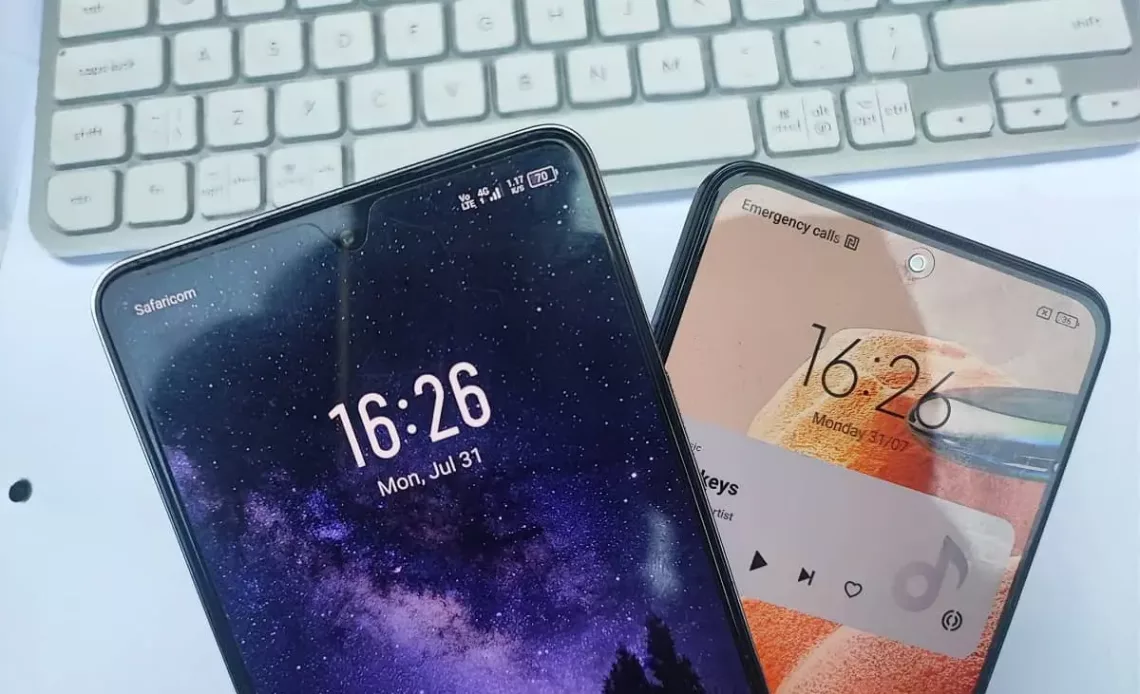
If you are looking for a new smartphone between Ksh 30,000 and 35,000, you do have a number of options including the new Infinix Note 30 Pro and the Xiaomi Redmi Note 12 Pro. The Infinix Note 30 Pro is available in stores for around Ksh 33,000 while the Redmi Note 12 Pro is available for Ksh 32,000. These two phones have a number of similarities but also have differences that may appeal to different people.
The Infinix Note 30 Pro was unveiled in Kenya not so long ago while the Redmi Note 12 Pro has been in retail stores locally for a few months now. Having used both, I am really impressed with how similar yet different they are. In this post, I will be highlighting some of the key things I found about each to help you decide on the one to go for.
Design and Build
The two phones have a similar design with a flat back and boxy style. They weigh almost the same with the Note 30 Pro coming in at 203g while the Redmi weighs 201g. They are the same size and I would have a problem telling them apart were it not for the different colors and camera placement at the back. This design isn’t bad, it actually is classy in my opinion.
The back cover of the Infinix Note 30 Pro is made of glass with a plastic frame. This is quite different from the Redmi Note 12 Pro that has a plastic back and plastic frame. The glass black on the Note 30 Pro does not stand out and you will be forgiven for thinking it is made of plastic. I have the Note 30 Pro with Variable Gold color that looks stunning. The Redmi on the other hand has the usual smartphone colors and I got the gray one.
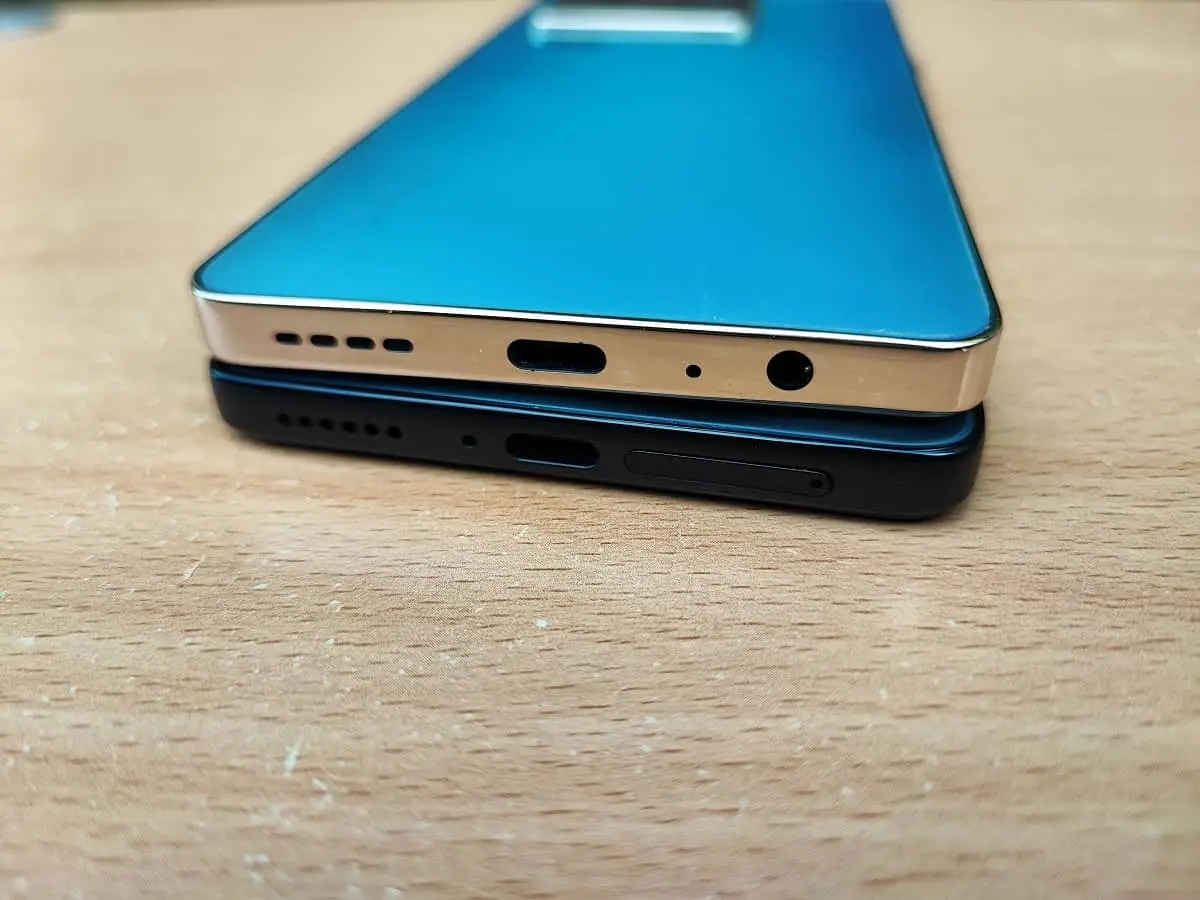
The color choice Infinix has gone with gives the phone very good visual appeal and makes it stand out. I know color isn’t a big choice when buying a smartphone but having these two side by side, most people I have shown the two phones have picked the Infinix Note 30 Pro.
Both phones have IP53 rating which means they are resistant to dust and water splashes. You should not dip any of them in water though.
The camera module on the Note 30 Pro is more pronounced compared to what we have on the Redmi. I will talk more about the camera later in this post.
Display
Both phones have a 6.67 inch AMOLED display with a resolution of 1080 x 2400 pixels. Both displays have 120Hz refresh rate with the Redmi Note 12 Pro having a high peak brightness of 1100 nits while the Note 30 Pro having 900 nits. Higher peak brightness means that the display can get very bright to use even when outdoors under direct sunlight. Even with that said, I did not have any issues using either phone outdoors under direct sunlight, I could easily see what was on the screen at all times.
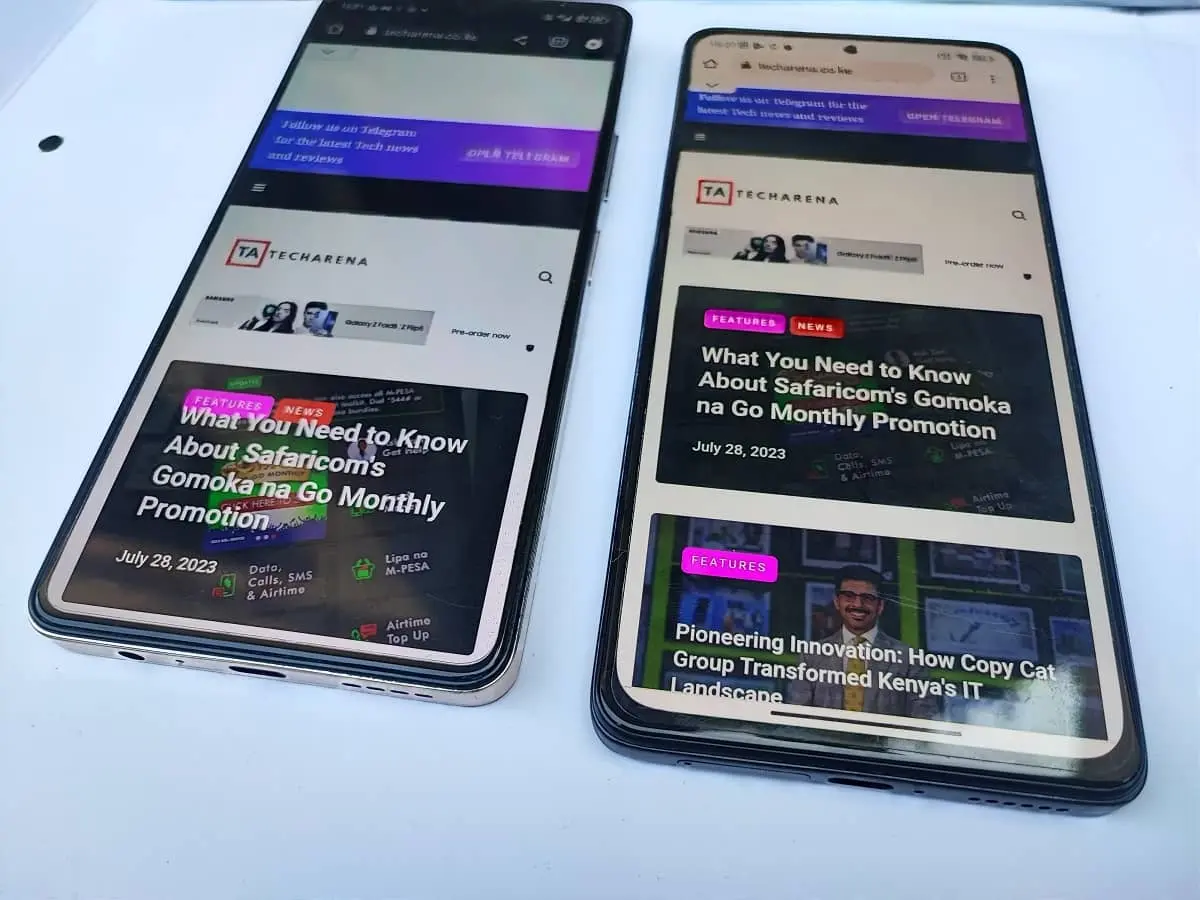
The Redmi Note 12 Pro’s display also supports Dolby Vision which is not the case with the display on the Note 30 Pro. Even though both displays are good, if you consume a lot of Dolby Vision media on your phone, the Redmi Note 12 Pro is worth checking out. The differences are subtle but they are there and you will notice deeper colors and better contrast.
Performance
The Infinix Note 30 Pro is powered by the MediaTek Helio G99 processor while the Redmi Note 12 Pro is powered by the Qualcomm Snapdragon 732 processor. I find these two processors to be almost at par.
The Helio G99 is a 6nm processor while the Snapdragon 732G is an 8nm chip. The Snapdragon 732G has slightly higher clock speed and may be slightly faster in some tasks. The G99 on the other hand is more efficient and may lead to better battery life.
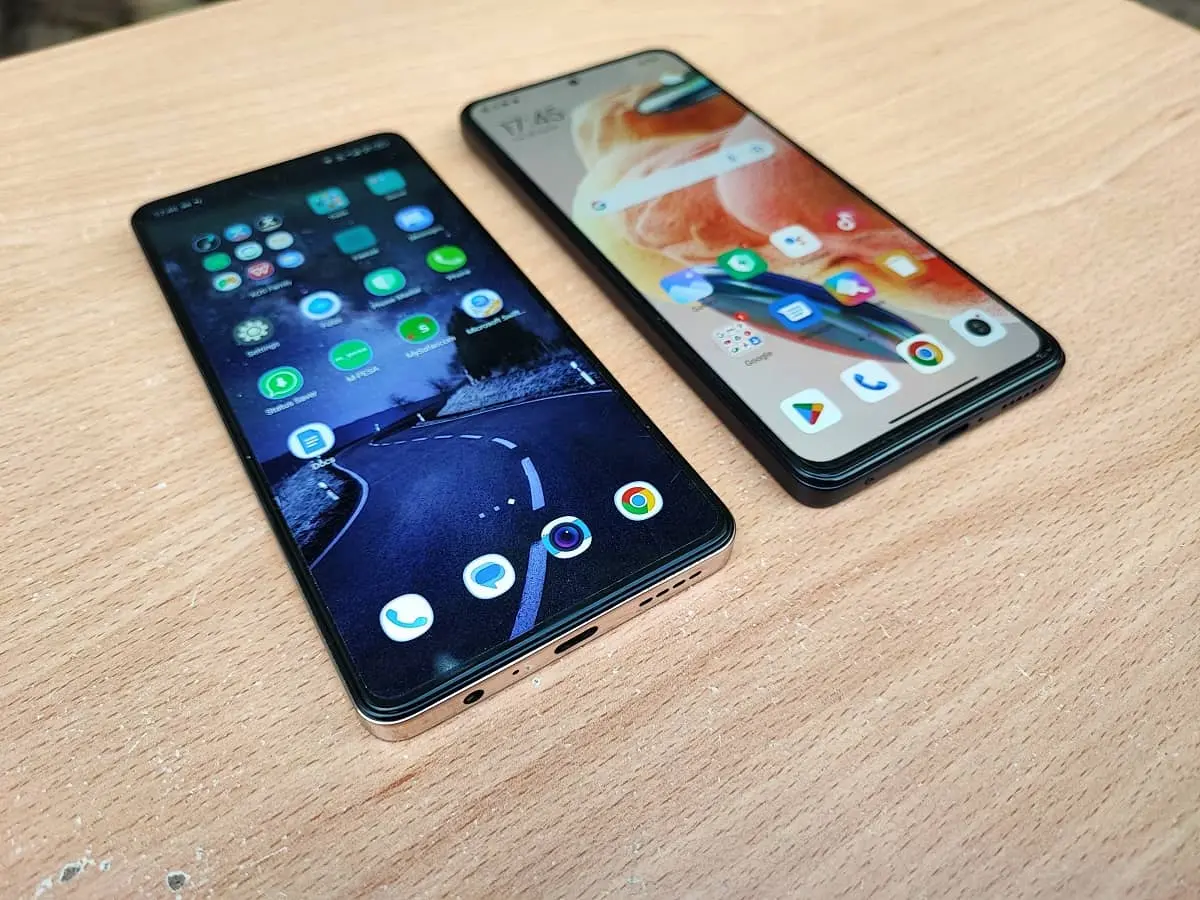
Overall, the differences are subtle and you may not really notice any when using either phone. They are both capable of handling day to day tasks and even demanding mobile games.
For the software, the Infinix Note 30 Pro comes with XOS 13 which is based on Android 13 while the Redmi Note 12 Pro comes with MIUI 14 which is based on Android 12. Given that we are not 100% sure about the software support plans for either of the phones, going with the most latest version (Android 13) is recommended.
In terms of the audio, the Note 30 Pro has Sound tuned by JBL which provides very rich and deep notes. The audio quality is really good compared to what the Redmi Note 12 Pro offers. They are both good individually but when you put them side by side, you do notice just how crisp and clear the audio of the Note 30 Pro is even at high volume.
Camera
Both phones feature a 108 MP main camera at the back. The Infinix Note 30 Pro has a triple camera setup made up of the 108 MP main sensor, 2 MP macro lens and a 2 MP depth sensor. The Redmi Note 12 Pro on the other hand has a quad camera setup made up of the 108 MP main sensor, 8 MP ultrawide, 2 MP macro and 2 MP depth sensor.
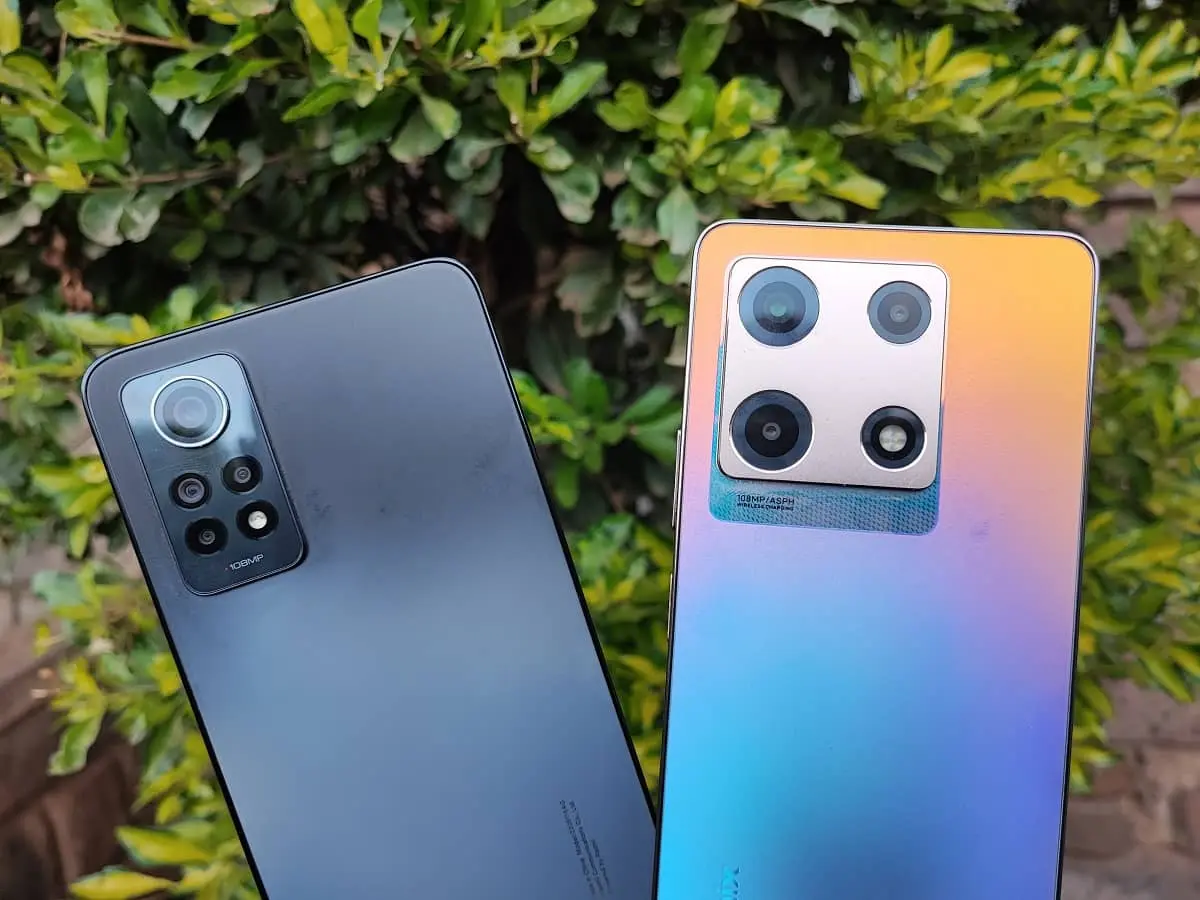
There isn’t that big of a difference in the quality of photos you get. The Redmi tends to add a bit more saturation which can cause distortion in some cases. The Note 30 Pro takes good shots but in most cases, it does process the image and the subject on the foreground gets the right amount of saturation but the background does not. This leaves the image appear to have unbalanced saturation which may not be ideal for some people as the background may appear washed out.
The Note 30 Pro takes sharper images and may be perfect for most people. The Redmi on the other hand brightens the shots and adds saturation leading to the images popping more than the Note 30 Pro. I do love what the Redmi does with the saturation and I would have loved the images if they had the clarity of the Note 30 Pro.
For selfies, the experience is the same as with the back camera. The Redmi adds the needed saturation while the Infinix does not. I still prefer the Infinix here as the selfies are detailed even though they are not very bright and vibrant.
Battery
Both phones come with a 5,000 mAh battery which can easily last you an entire day. I managed to get around 7 hours of screen-on time on a single charge for both. Speaking of charging, the phones support 68W and 67W charging for the Infinix Note 30 Pro and Redmi Note 12 Pro respectively. Both can be charged fully from 0% in about 54 minutes.
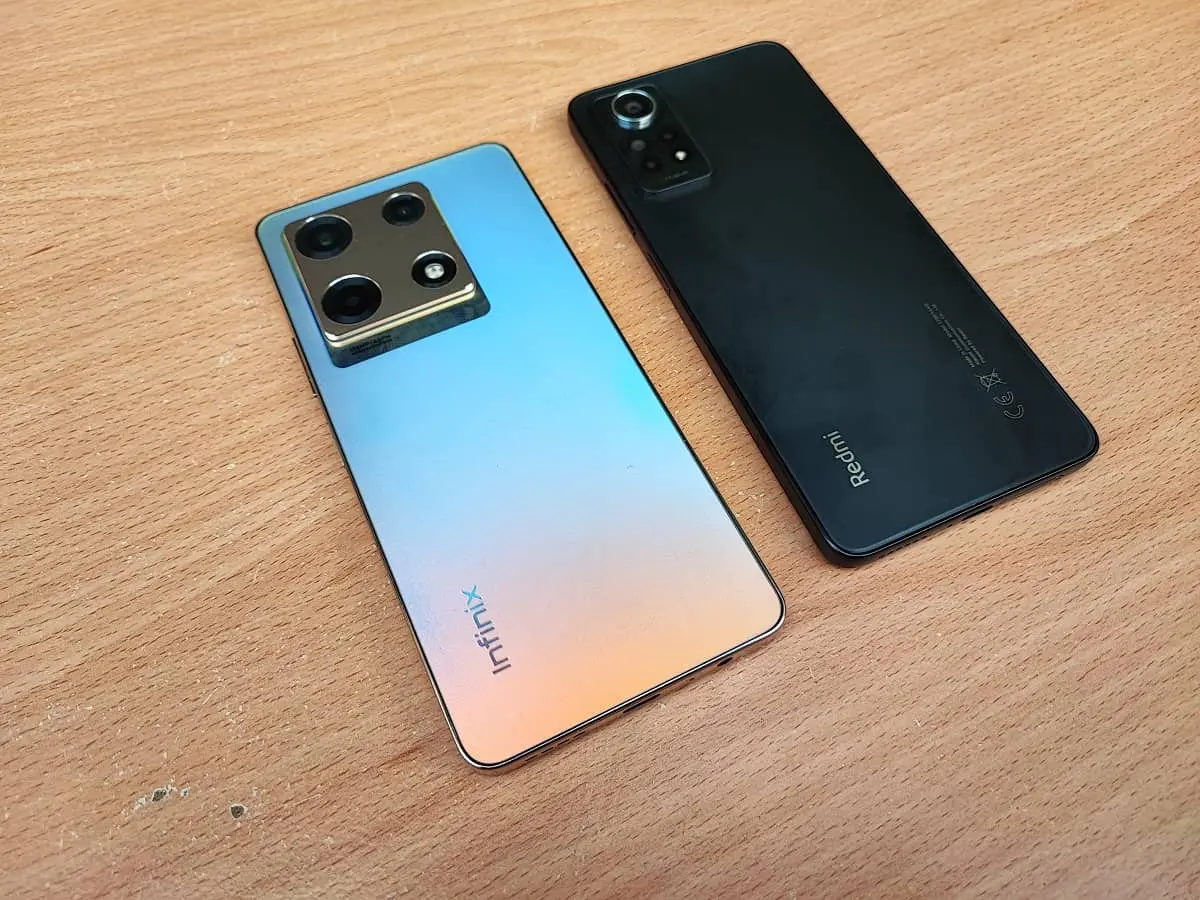
The added advantage for the Infinix Note 30 Pro is that it supports 15W wireless charging and reverse charging. Reverse charging here means that you can charge other phones or electronics both wirelessly or wired using the Note 30 Pro. Since both batteries are at par, these extra features make the Note 30 Pro enticing for those who have multiple devices that they may need to charge from time to time. I am also impressed with the inclusion of wireless charging at this price, this is not something we see that often.
Verdict
From what I have shared above, the two phones are good in their own right. The Infinix Note 30 Pro looks better, has slightly better cameras, better audio, up to date OS version and better charging options. The Redmi Note 12 Pro on the other hand has a slightly better display and slightly faster processor.

